From the oceans to the mountains
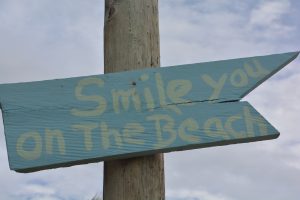
We’re on the beach and still smiling despite constant rain stopping us from visiting Belize’s famous islands or do any snorkeling
Belize is famous for its barrier reef, tropical weather, beautiful long beaches and layback Caribbean lifestyle. The tropical weather – that is, almost constant rain, was stopping us from visiting the reef but we still wanted to see what life was like at a Belizean beachside community. So our goal for the day was the southern beaches around the sandy town of Placencia but to get there we had to go up and over the coastal ranges, covered in thick impenetrable jungle, dripping with water from the recent rains and probably crawling with animals not behind fences.
We stopped at the Blue Hole National Park and walked back about 200 metres into a St. Herman’s cave, dark, slippery, running water just below us, our torches our only salvation, very cool but slightly spooky stuff. The Blue Hole was another collapsed limestone cave, what the Mexicans would call a cenote, and part of an underground water system but in the rain it was more like a mud hole.
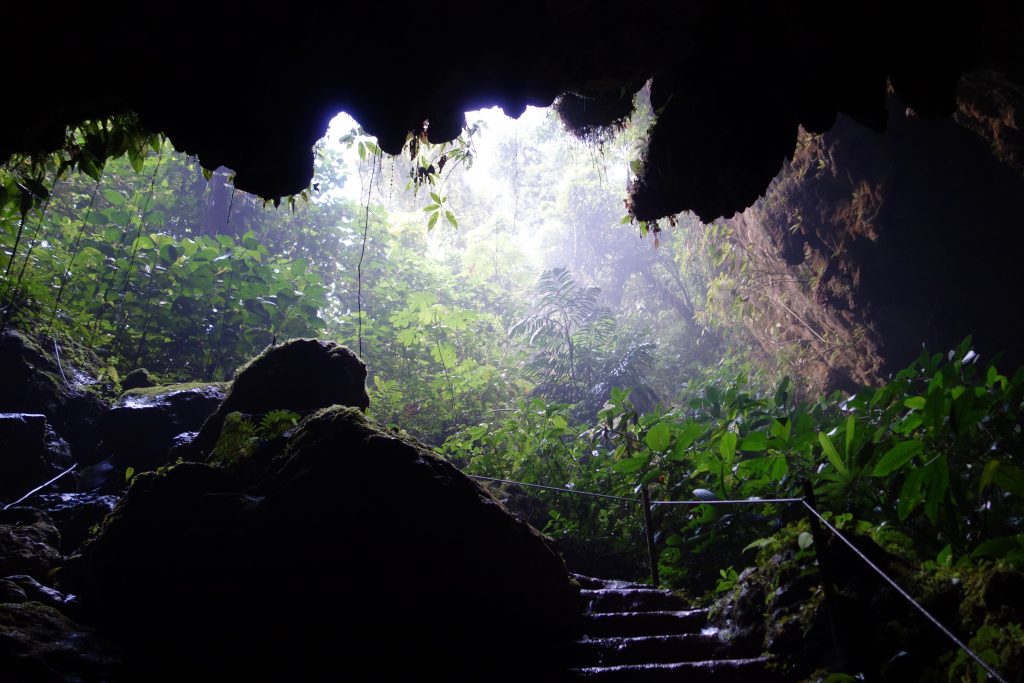
Goodbye sunshine – St. Herman’s Cave in Blue Hole National Park was a little slippery – and spooky – to explore as the only ones in the cave
We finally hit the coast and drove southward out to the end of a long narrow sandspit, sometimes less than 100 feet wide, to the small town of Placencia. Placencia is a curious mix of local community struggling to make ends meet and guest houses where short to medium term western visitors come to chill out. There is a low-end holiday feel to the place but at the same time a bit tired and scrappy. Our original plan was to take a boat to the reef but with the clouds perpetually grey and the next storm never more than half an hour away all such ambitions were scuppered. We found a beaut place to camp on the beach a little north of the town and enjoyed a fire just metres from the lapping surf during a rare period between storms. When its not raining Belize is very cool.
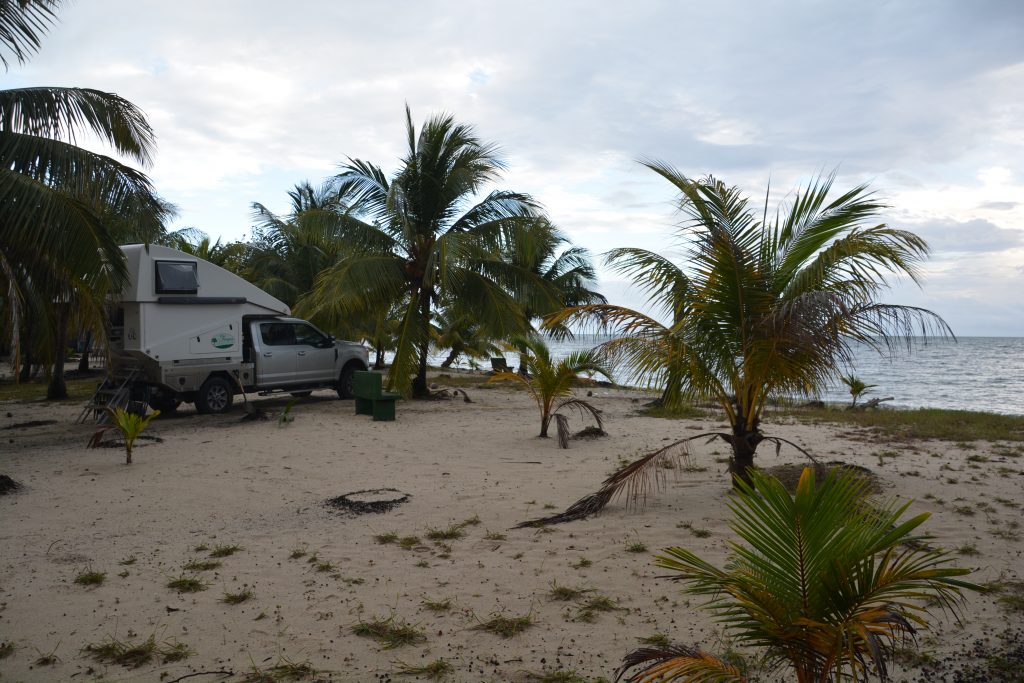
Our camping spot on the beach near Placencia was fabulous and the rain stopped long enough for us to have a fire
The next morning we retraced our steps under a continuous succession of short tropical downpours, visiting the small super-sleepy beachside community of Hopkins, then checked out the larger regional community of Dangriga before heading back over the jungle-clad mountains and into the nation’s capital of Belmopan.
Belmopan was built as a custom-made capital after Belize City was hit by too many bad storms and hurricanes. We had trouble finding the centre of town or the parliament building or Independence Plaza that supposedly is the centrepiece and were totally underwhelmed when we finally tracked them down. It’s just another reminder of how small, under-developed and modest the country is.
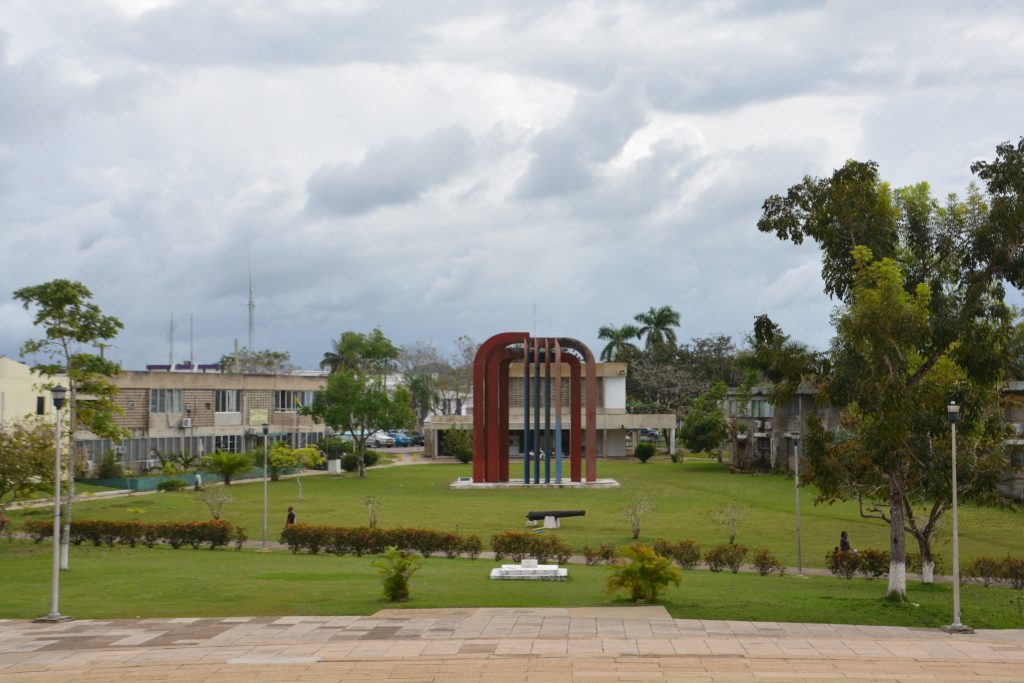
Yeah, we found it! Independence Plaza, modest though it may be, marks the centre of Belize’s capital, Belmopan
San Ignacio is a thriving little town in the mountains near the Guatemala border where many tourists base themselves when visiting the local Mayan ruins and other jungle attractions such as cave tubing where you ride a tube down a river that goes through very long caves. We found a campground near the centre of town and despite the pouring rain we walked into town for drinks and dinner.
Belize’s most famous Mayan ruins, Caracol, is about 50 miles south of San Ignacio deep in the mountains and jungle and close to the Guatemalan border. In the past this has been lawless country and the military operates optional convoys into and out of the site for everyone’s protection. The road is a very rough dirt and mud track up and over the mountains, winding its way southward, occasionally dipping down to cross cement causeways across modest rivers.

Tramp to the rescue! A tree had fallen across the road to Caracol but we hooked up our snatch strap and drug the tree off to the side.
But after all the rain the region had recently endured this trip turned into a very demanding four-wheel drive journey, many times slipping and sliding in the gooey red clay mud, crossing rivers, driving through flooded areas, windscreen wipers in constant use. It was technically some of the most difficult driving we had done on this trip. We ended up forming our own convoy with two local guides in four-wheel drive trucks and passed through safely.
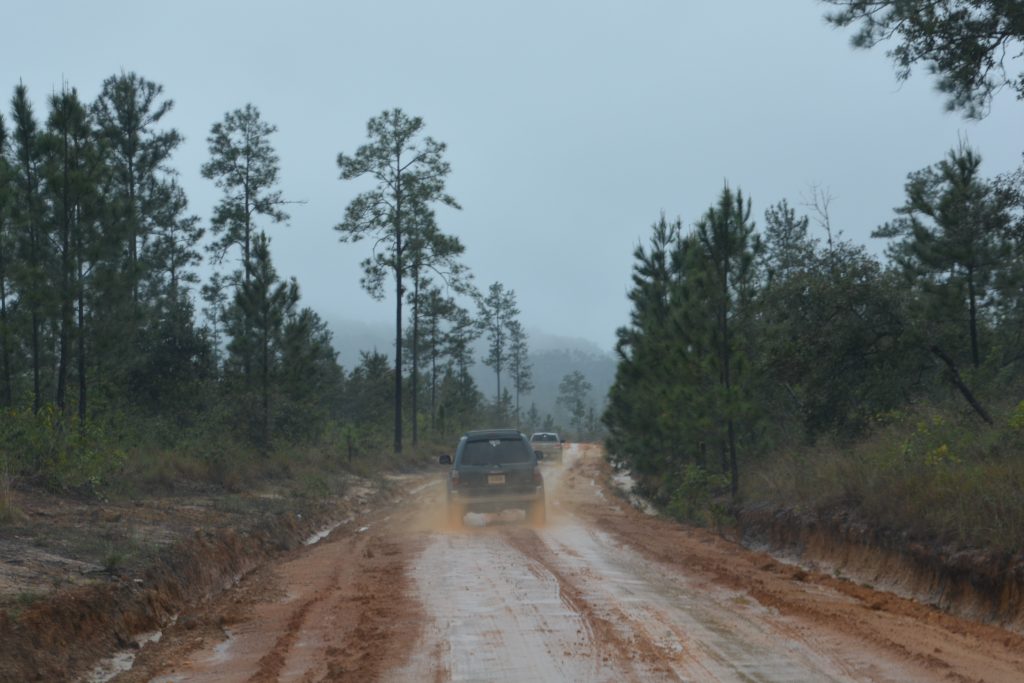
It rained all morning on the drive to Caracol and our little convoy slipped and slided the whole way
Caracol is an extraordinary site, hidden deep in the jungle, home to more than 100,000 people in its heyday, perhaps as many as 30,000 structures hiding in the thick foliage, huge temples, terraced fields for crops, causeways for transport and irrigation, absolutely amazing stuff. On the day we visited only 28 other people were there and at times we would have entire temple complexes to ourselves. The jungle was thick all around us, still clinging to the backs of the unexcavated temples and the whole scene was other-worldly.
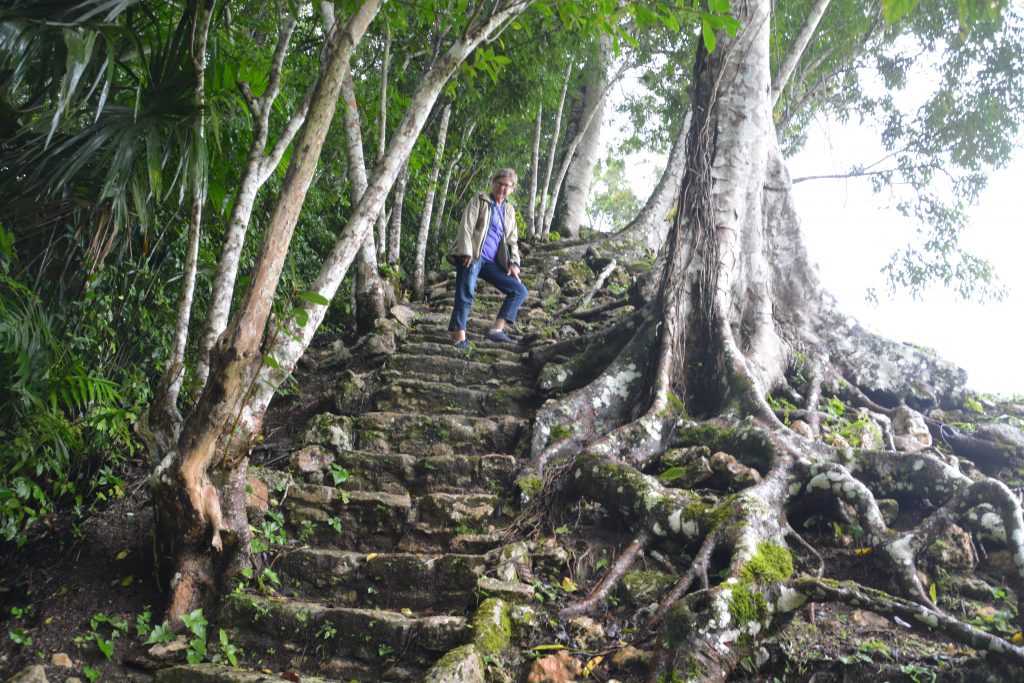
Steep slippery steps, tree roots and ancient stones all added to the fun – and challenges – of the day
The Caana temple is 43 metres (143 feet) high, the tallest manmade structure in all of Belize. From the top of the temple, no easy feat with some steps two feet high, we gazed across the jungle tops, mist and fog clinging to the mountains all around us, just magical. We gave Caracol top marks.

The Caana temple rises behind me, an amazing accomplishment, still the tallest manmade structure in Belize
The drive back to civilisation was an even more extreme experience as some areas had deteriorated during the day and ran the risk of soon being undrivable. The whole day was full of fun, adventure, wonder at these marvellous ruins and a few white-knuckle moments behind the wheel.
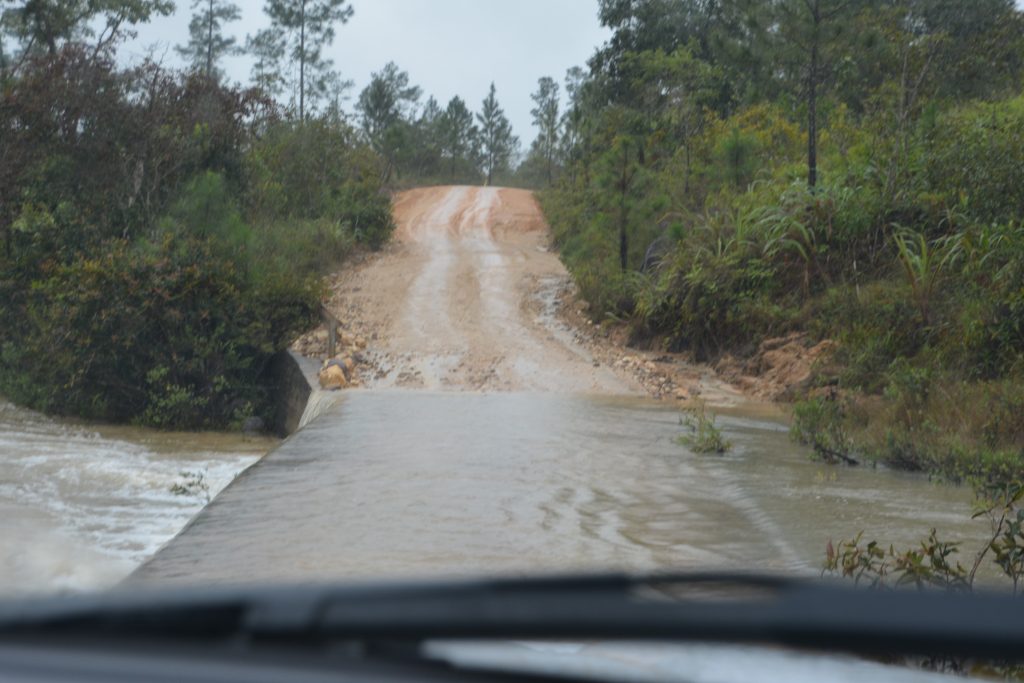
The water had risen while we were in at the ruins and some parts of the track were probably impassable the next day

All those rough roads made Tramp very thirsty and by the time we hit the first village his computer said he could go zero miles further. This little shop keeper sold us three gallons from his secret stash and helped us load it in.
After another night in soggy San Ignacio we headed eastward towards the Guatemalan border. But no, not quite, there’s another Mayan ruin we ‘had’ to see and so it was that we found ourselves on an amazing hand crank cable ferry crossing the flooding Mopan River and exploring the Xuantunich Mayan ruins which are sprawled over a prominent hill less than a kilometre from the Guatemalan border.
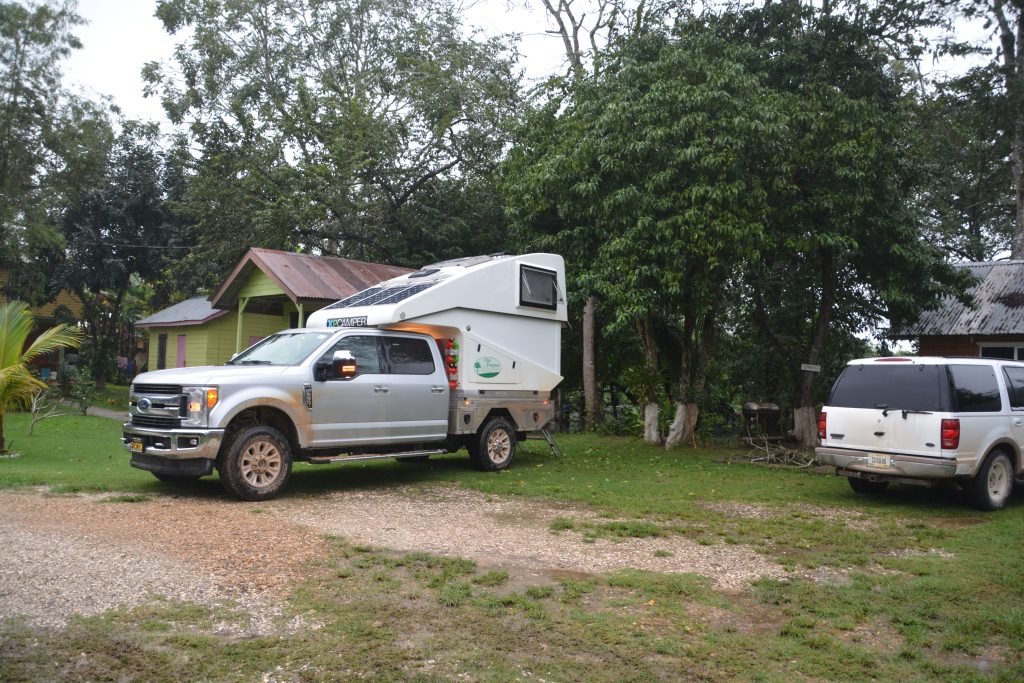
We camped two nights at this campground in San Ignacio and on the second night had one of the only spots on high ground
Xunantunich was a moderate sized site with the now familiar setting of a series of pyramids forming an open plaza with a nearby ball court and a few other altars and temples thrown in. The largest temple, called El Castillo, featured some amazing carvings from around 900 AD and provided stunning views of the rest of the site and the jungle-clad mountains all around.
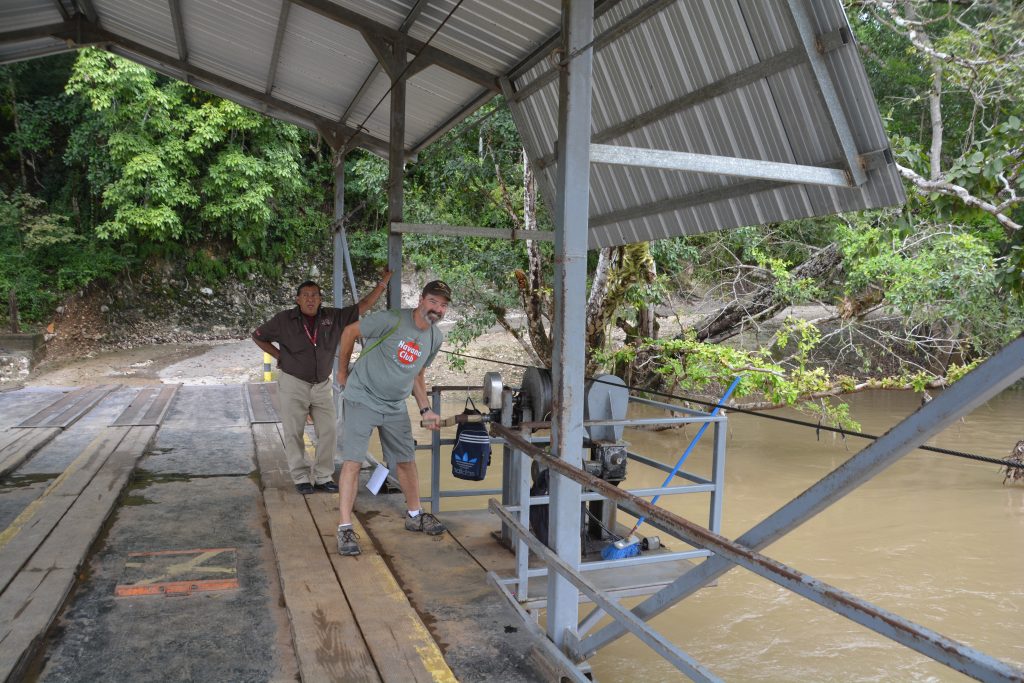
Never seen that before – a hand-cranked cable ferry to cross the flooded river and our ferryman was only too happy to let me crank us across the river
Our time in Belize had come to an end without a single swim, snorkel or sunburn. But we loved the people and the casual Caribbean-style lifestyle, the Mayan ruins and the unique English language experience. We couldn’t believe the cost of gas – perhaps one of the highest in the world at US$5.68 per gallon (A$1.86 per litre) and didn’t rate the beer but we’d definitely come back if we knew the sun was shining and the snorkelling would match its potential.
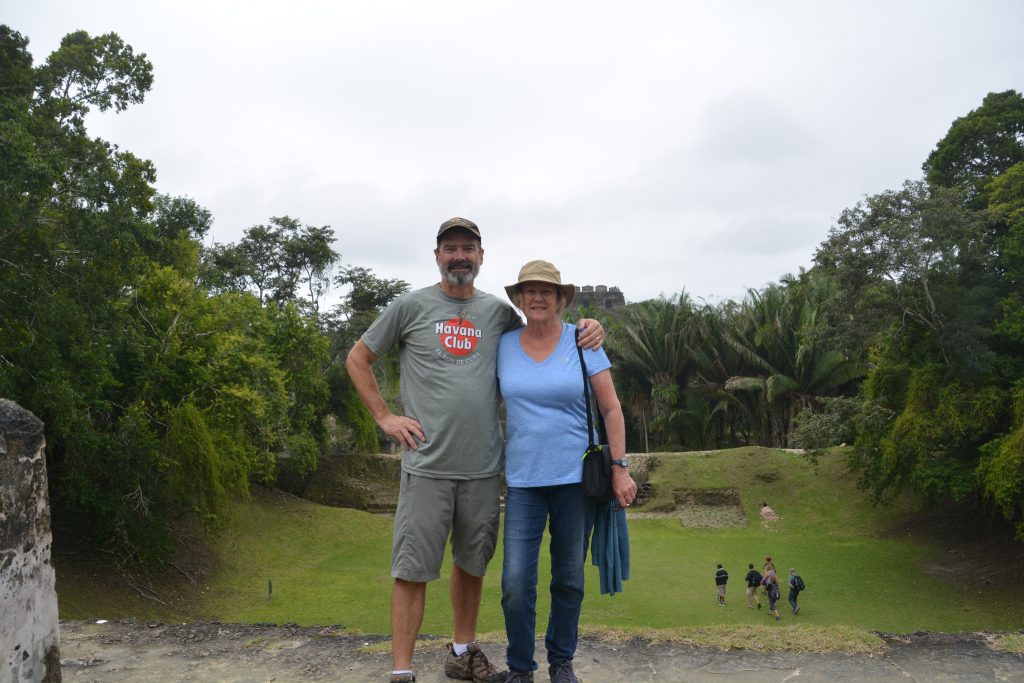
Our last shot in Belize from one of the pyramids at Xunantunich. We need to come back to Belize someday when the sun is shining.
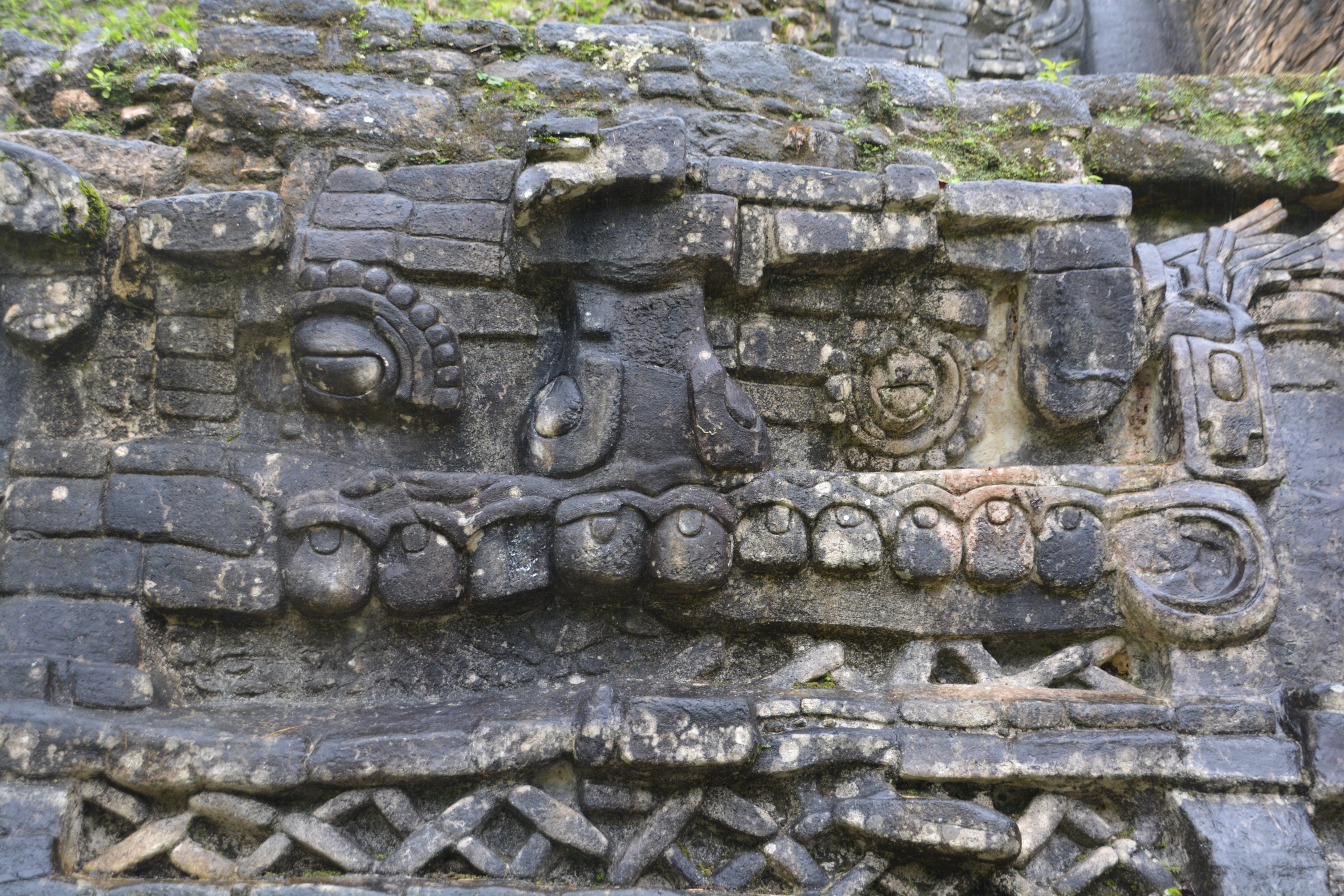










Comments
From the oceans to the mountains — No Comments
HTML tags allowed in your comment: <a href="" title=""> <abbr title=""> <acronym title=""> <b> <blockquote cite=""> <cite> <code> <del datetime=""> <em> <i> <q cite=""> <s> <strike> <strong>